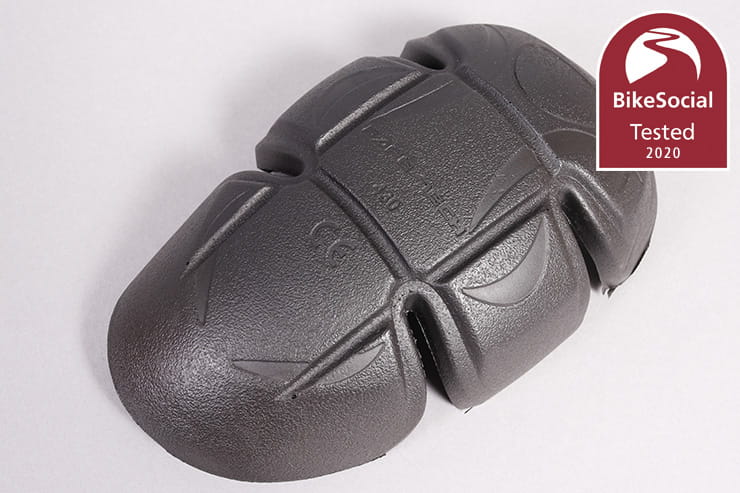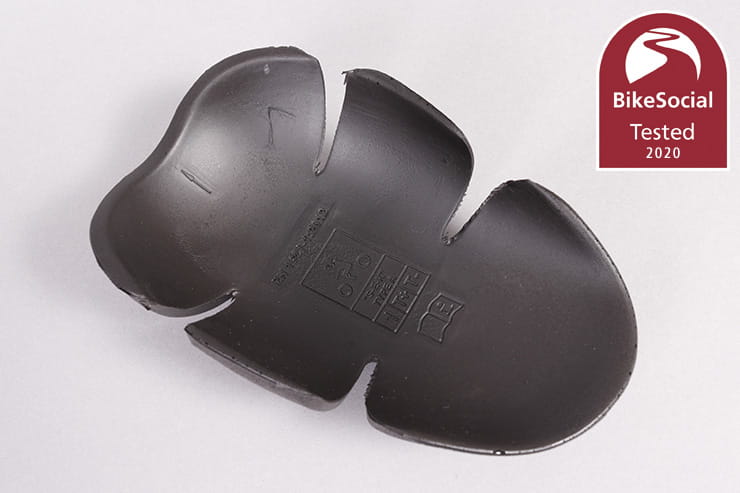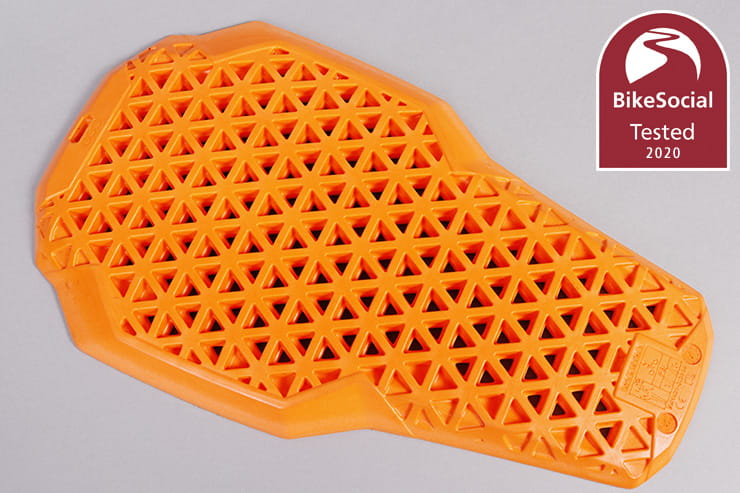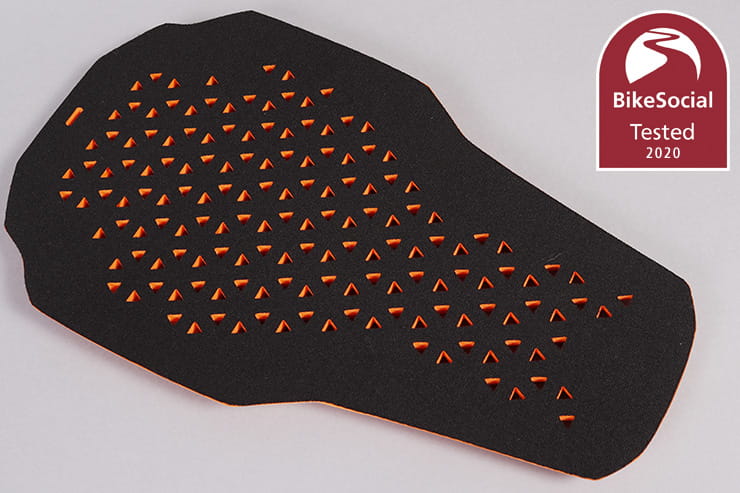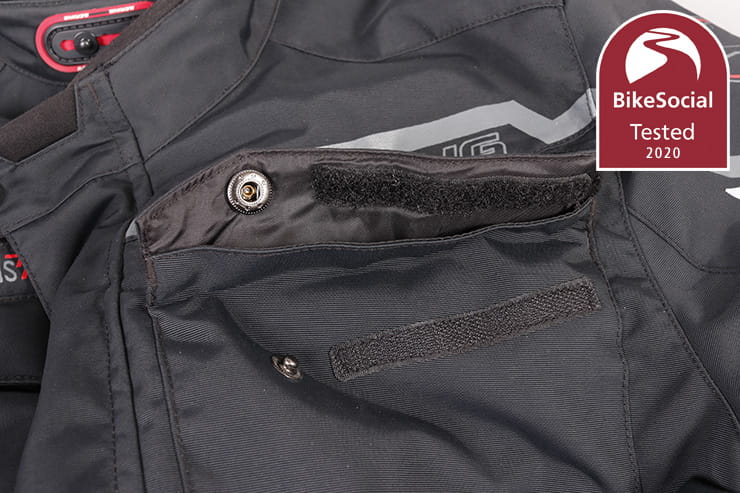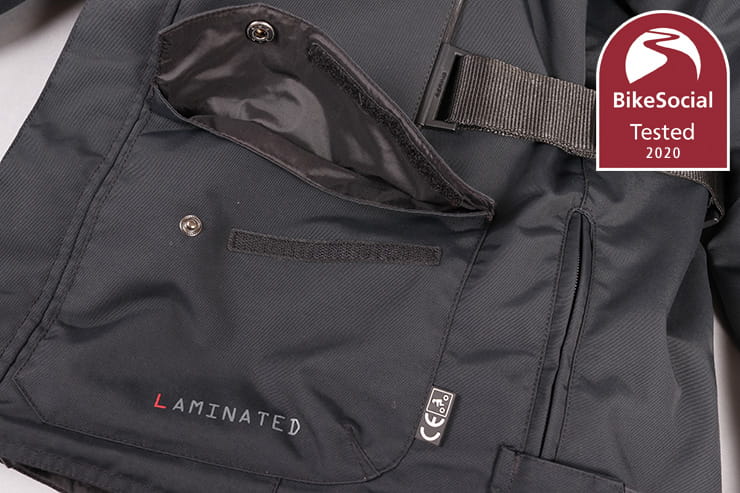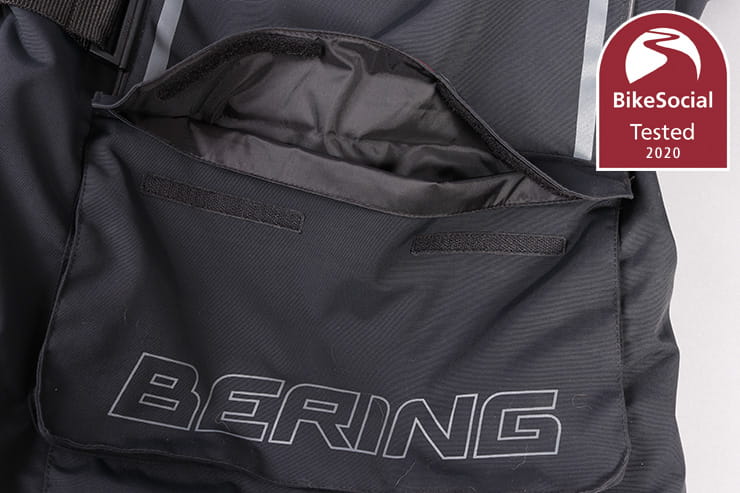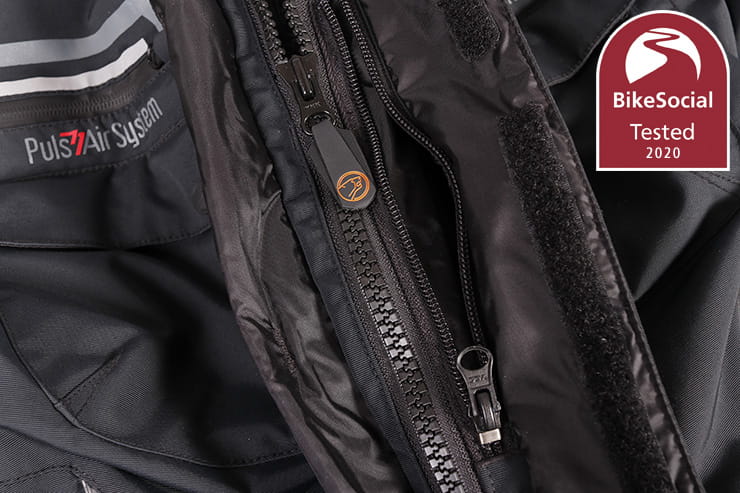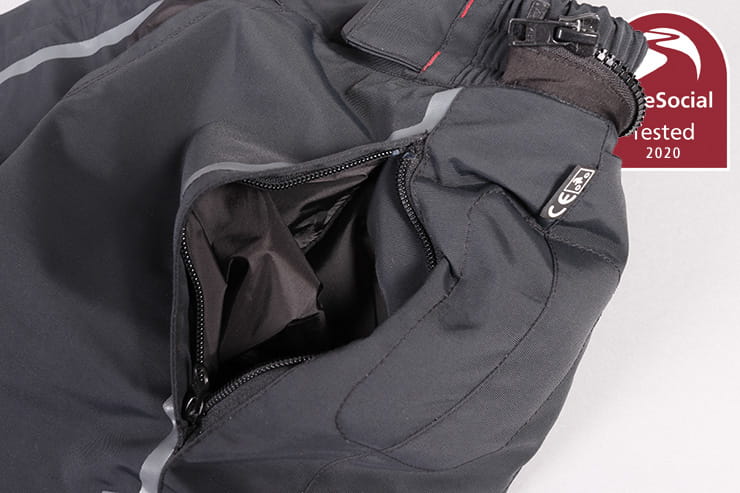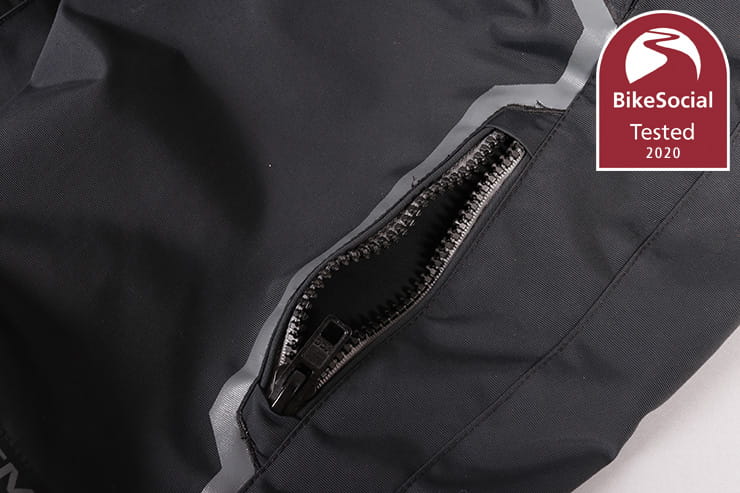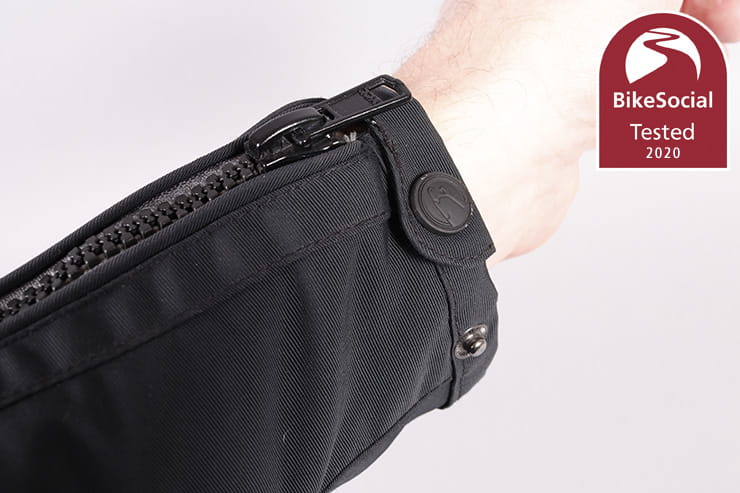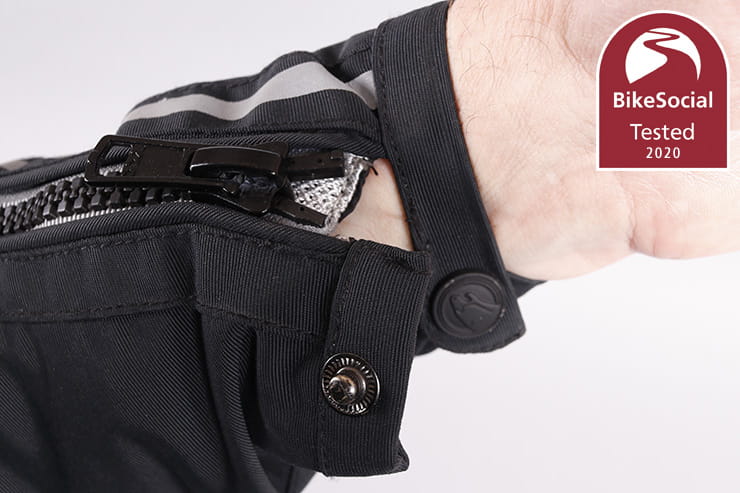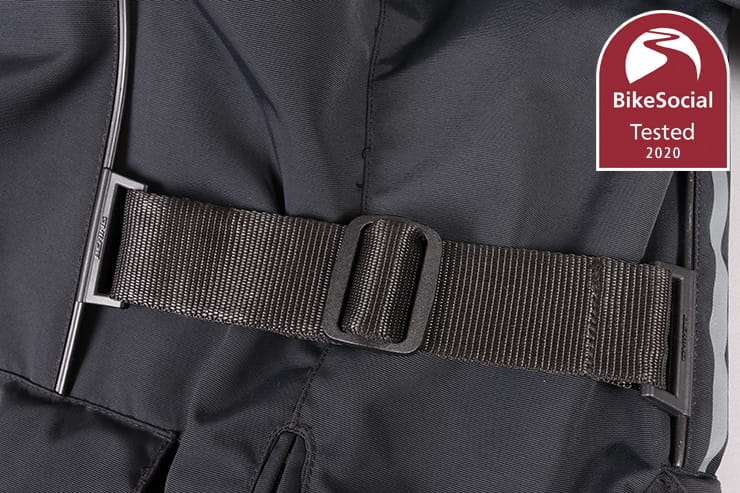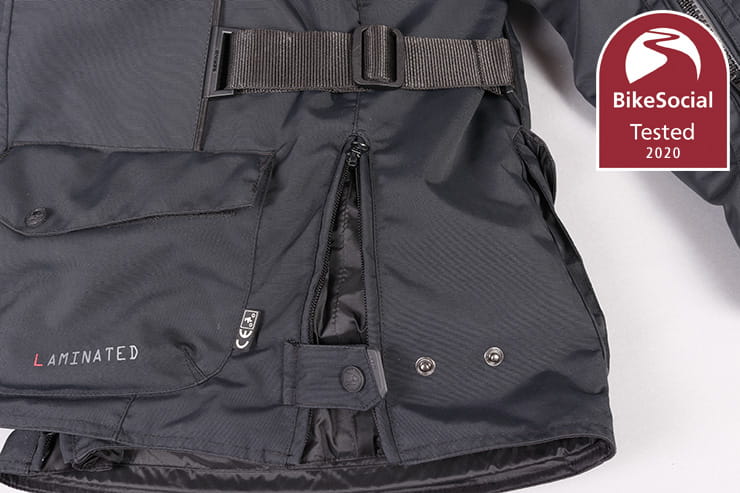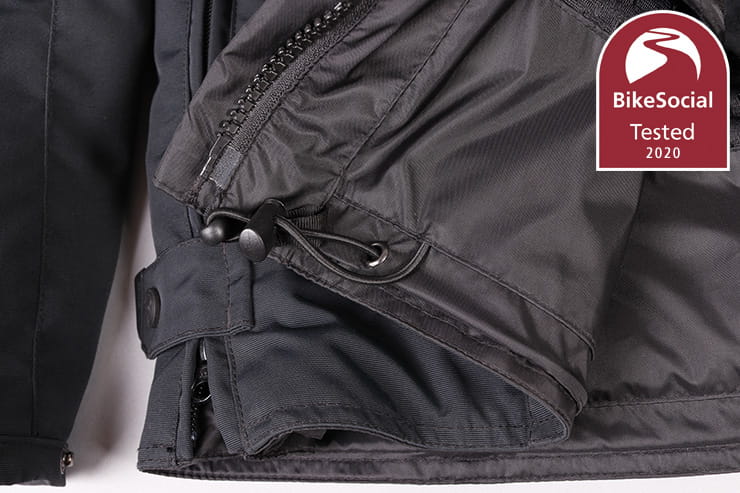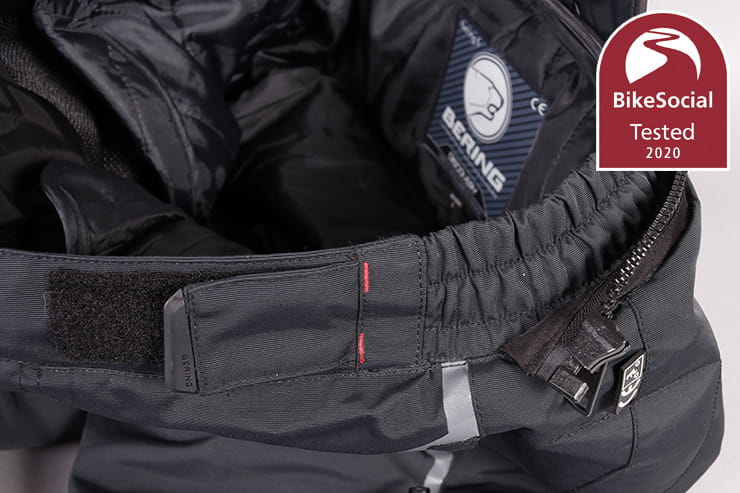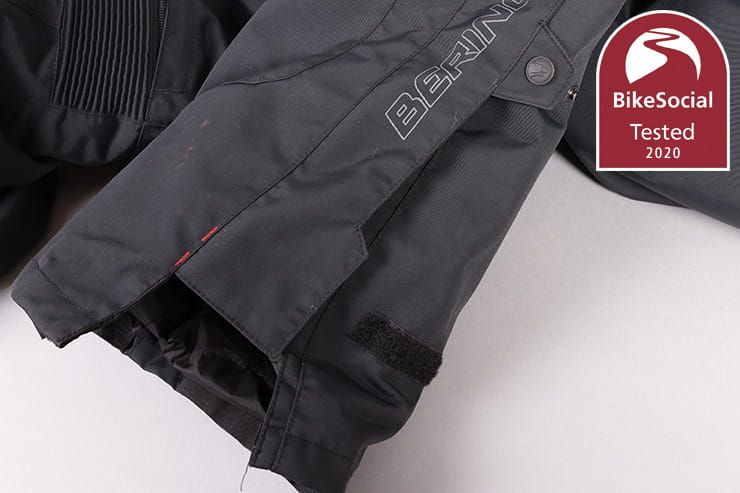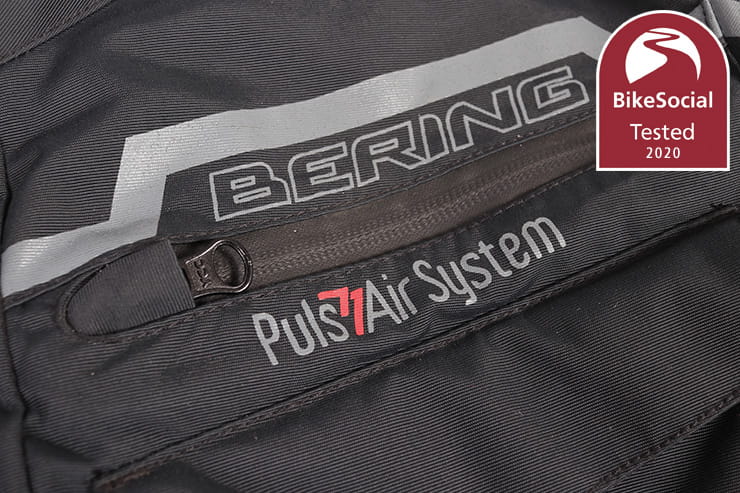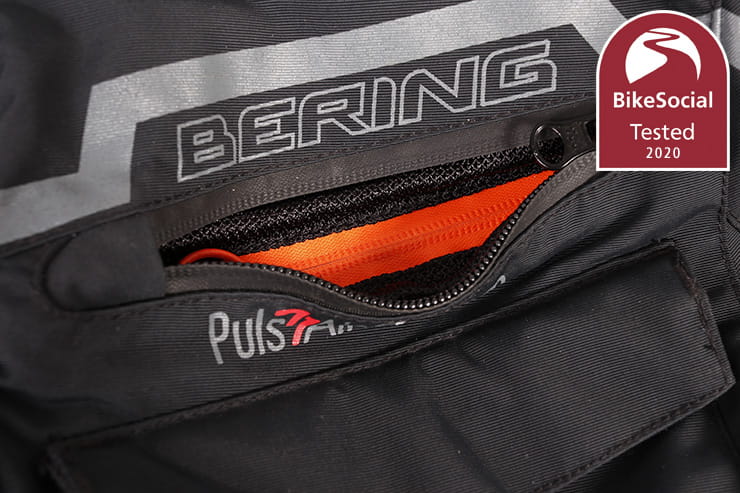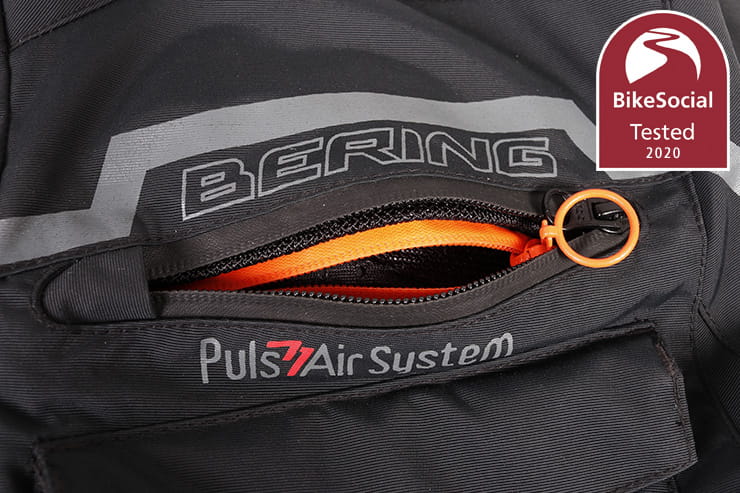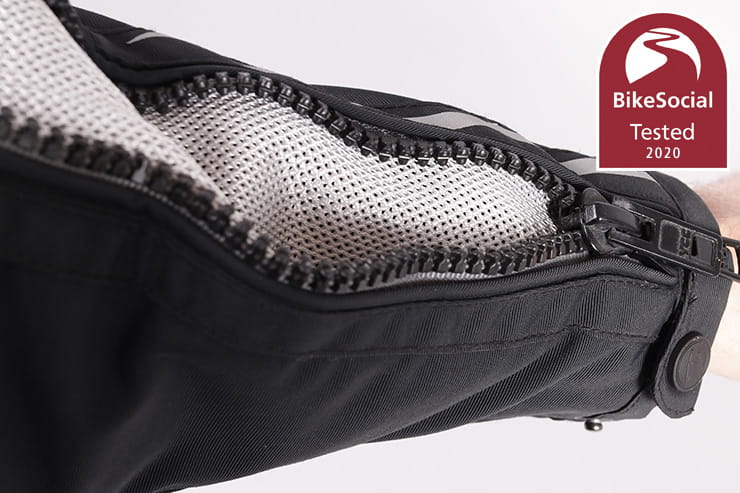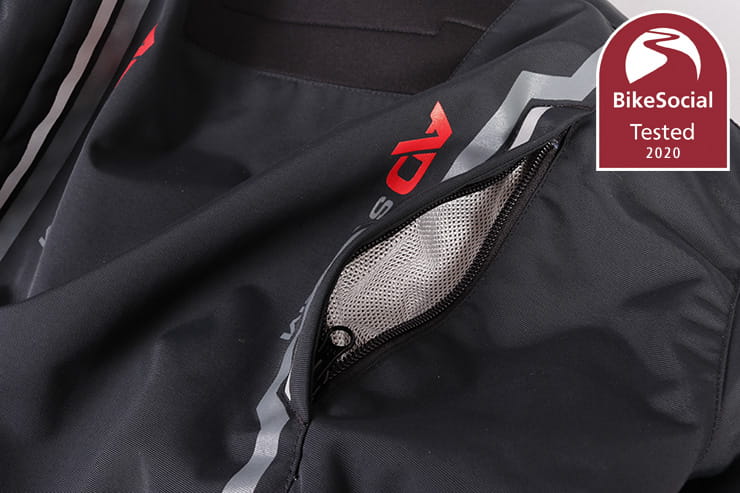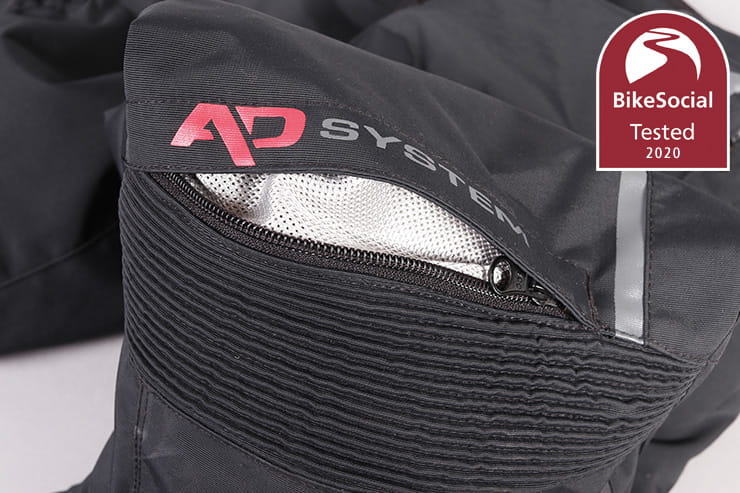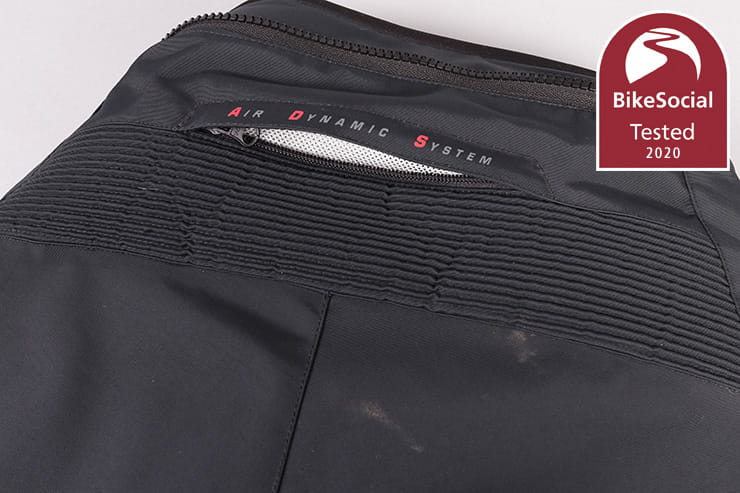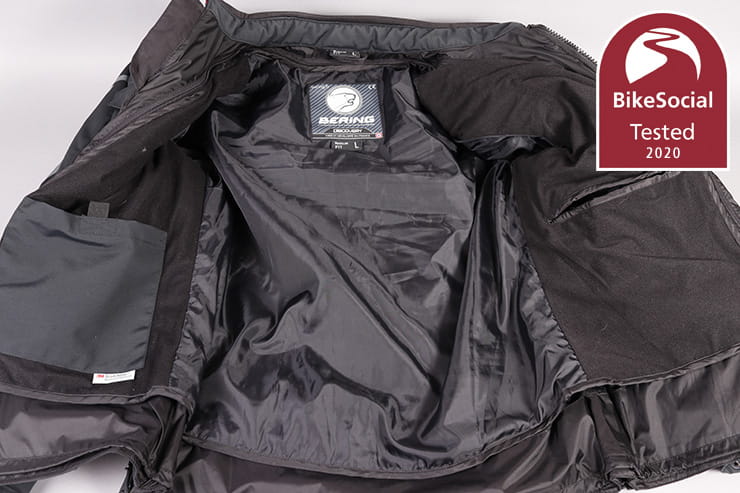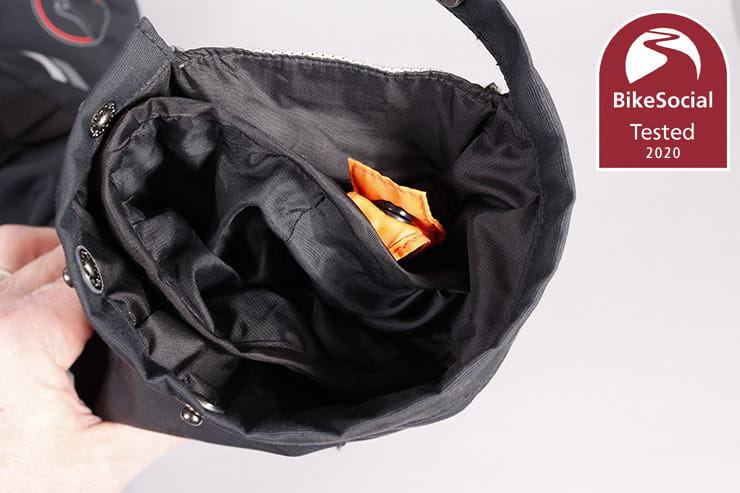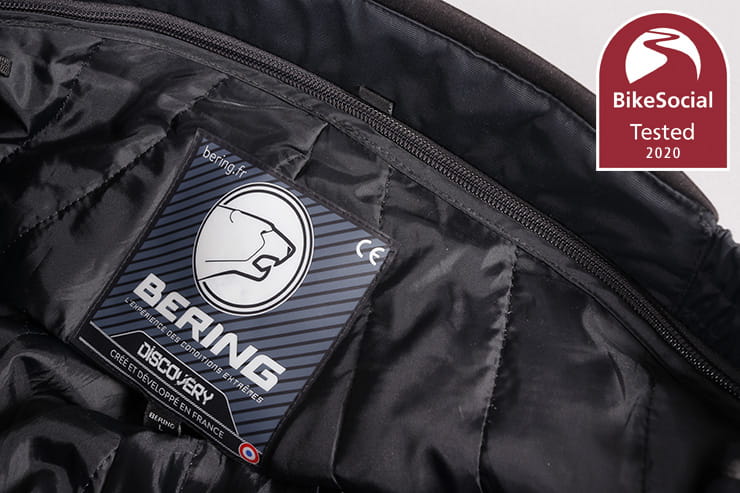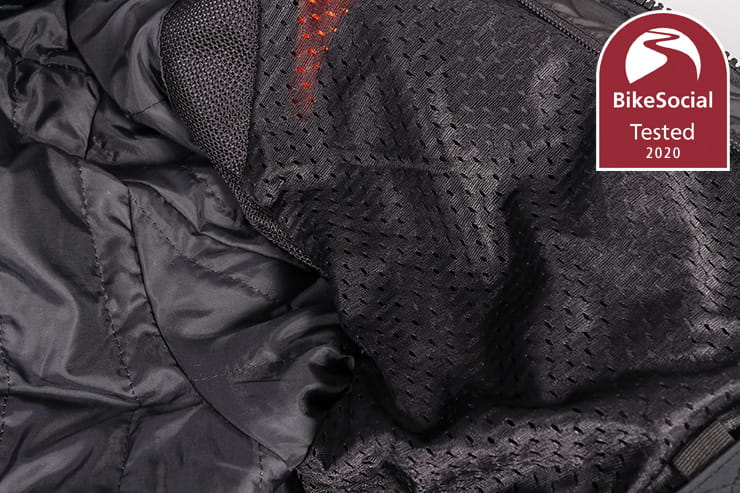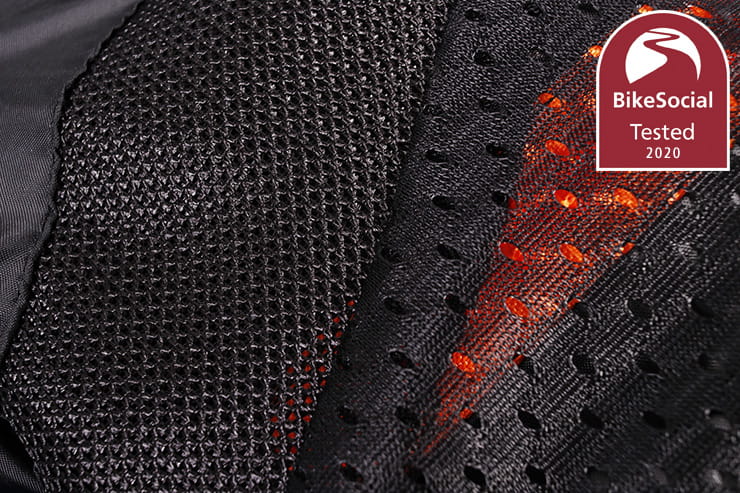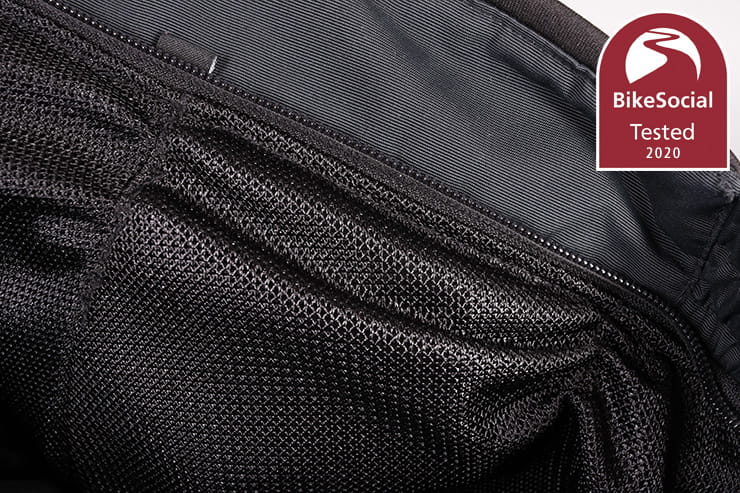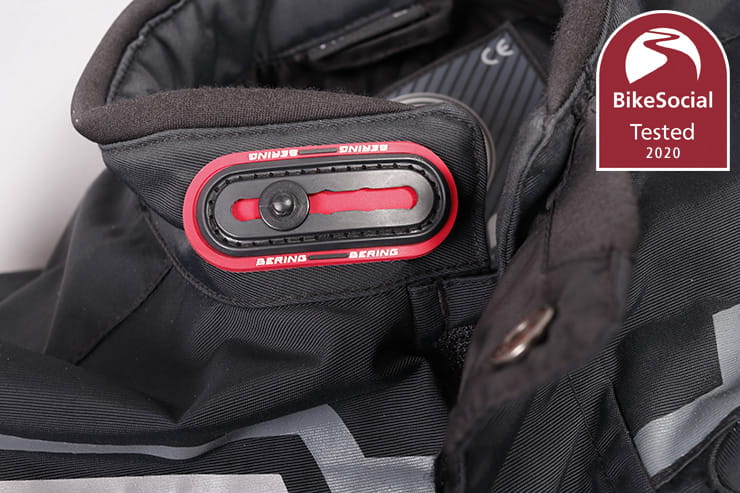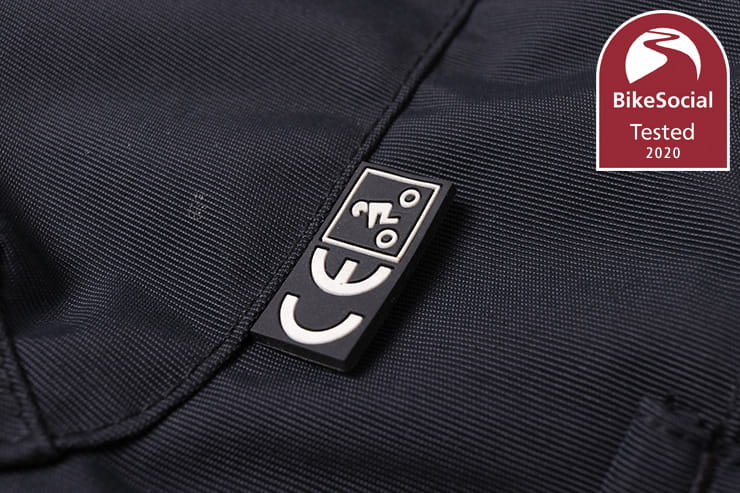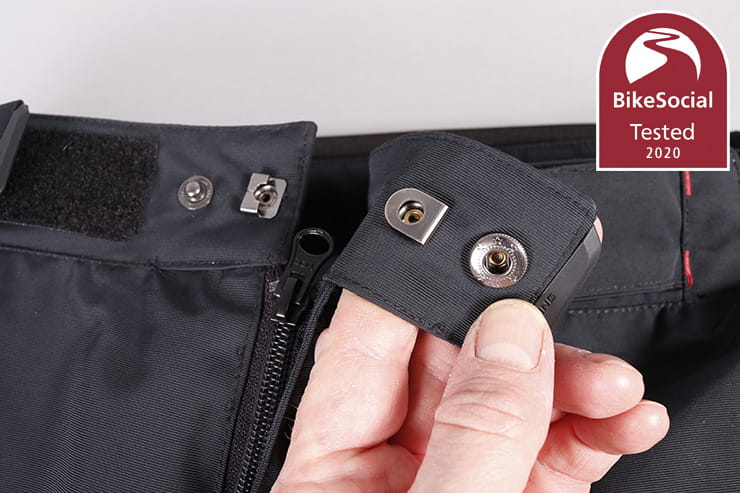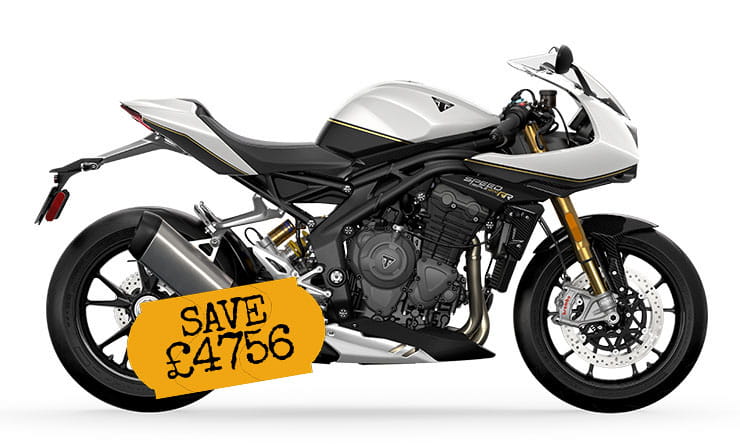Date reviewed: January 2020 | Tested by: John Milbank | Price: Jacket £319.99, Trousers £250 | bikerheadz.co.uk
The Bering Balistik jacket and trousers are waterproof motorcycle textiles designed for all four seasons. Sold as a laminate construction – potentially the best build for regular all-weather riders – having used these for the past four months on a Kawasaki Versys 1000, BMW S1000XR and Kawasaki ZX-6R in very cold and wet conditions, I’d describe them as more of a hybrid construction. Priced at a total of £569.99, are they the best buy when it comes to bike kit?
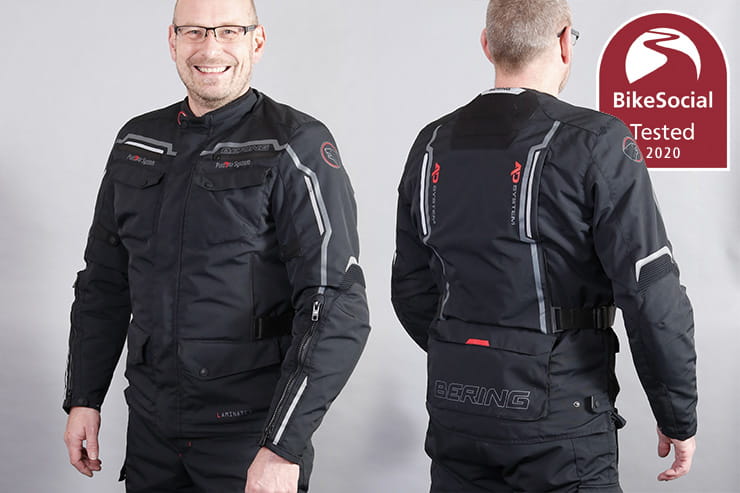
Fit
I typically take a size large jacket and trousers, being 5’10” and around 85-88kg; the Balistik fits me exactly as expected, though of course you should always try any kit on for yourself, both standing, walking and sat on the bike.
The jacket is a mid-to-long length, the hem sitting around the tops of my hips without dragging too far down my rear, while the trousers have loops at the bottom to tuck under your feet – these can help reduce the risk of the trousers riding up in an accident, but with typical touring boots they’re not really that necessary; fitted with poppers, I just took them off.
While a small point, it’s nice to see good length hanging loops on the top of trousers, which makes it easier to pop them on a suitable hanger to dry.
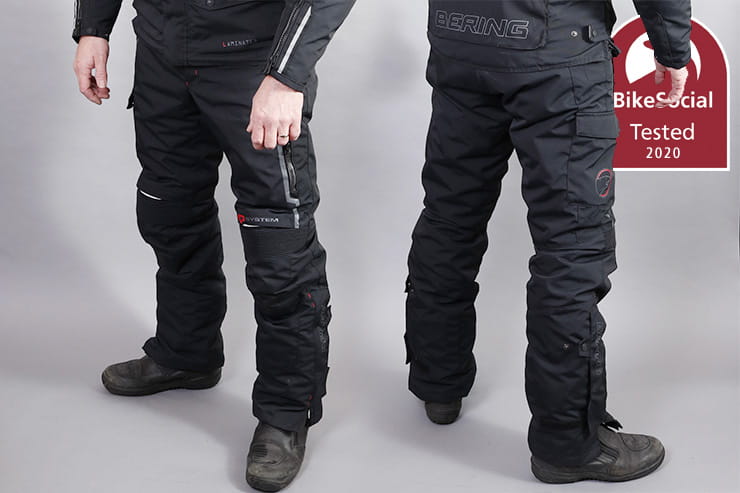
Protection and certification
The Bering Balistik trousers come with CE Level 1 hip and knee armour, while the jacket includes Level 1 shoulder and elbow armour. It’s a shame there’s no back protector supplied, though there is a pocket; Bering offers one for an additional £28, but I’ve fitted the new D3O BP4 Level 1 back protector, which fits in the Ballistik’s pocket perfectly and moulds comfortably to my back in use.
The Bering Balistik comes with CE-approved armour in the shoulders, elbows, hips and knees.
A thicker Level 2 D3O BP4 is also available (Level 2 is the higher protection level), and it’s great to see that Bering has used a standard size for the pocket – it means that you can invest once in a quality back-protector, then use in in other kit as long as it fits. The advantage of the D3O protector is that it’s lightweight and designed with dozens of holes that help prevent your back getting sweaty.
I’ve fitted the D3O BP4 Level 1 back protector to the Bering, which doesn’t come with its own. The D3O version is a little more expensive than the Bering, but it’s much more ventilated, so I prefer to use this type of protection in the warmer weather. Of course, it can also be used in other kit that has a standard-sized pocket in the back.
The Balistik jacket and trousers are also CE-approved as Personal Protective Equipment in accordance with the law that came into force in 2018. Unusually, this is rated to the previous EN 13595 protocol, but a version that was developed in France a few years ago. While the UK only used EN 13595 Level 1 and 2, the French protocol introduced a much lower ‘urban’ level, which is what the Balistik is rated to.
Very similar to Level A of the new prEN 17092 standard that’s being used most predominantly across the UK and Europe now, it means the garment is tested against the lowest resistance to abrasion (similar to what a single layer of denim, polyester or polyamide will achieve).
This PPE certification level is in line with what a lot of textile kit is currently being tested to, with only a handful rated to the higher AA or even AAA level.
Ultimately, the Balistik isn’t the toughest-feeling kit, but it’s well made with a solid construction to the seams – it’d have been nice to see some reinforced panels at key impact points, but the price would no doubt have been higher.
Reflective details on the front, back and sides adds some extra visibility for night riding.
From April 21 2018, all new motorcycle clothing is deemed to be Personal Protective Equipment (PPE). To meet this legislation, it must be tested to a recognised standard. For more information on the law, click here.
Pockets
The trousers have two good-sized hip pockets, as well as a third one on the left thigh; none of them are waterproof, but I only tend to use these when I off the bike without the jacket.
There’s plenty of storage on the jacket – two large main pockets at the front, two good sized ones on the chest above, a fair-sized map pocket on the rear, a large zipped pocket on the chest (under the storm flap) and a Velcro-fastened pocket inside on the left. The thermal liner has a slit to access that inner pocket and also has its own on the right.
I can easily carry all I need in the outer pockets, but I’m slightly disappointed to find only Velcro and a single popper fastening each of the four on the front. I’ve not lost anything, but I’d have a little more confidence if there were zips fitted. The outer pockets fold over and do a good job of keeping their contents dry, but in a heavy downpour they do start to get damp inside; not a problem with most modern phones, but you might want to put your wallet in an internal pocket during the very worst weather.
I’d have preferred a Velcro adjuster on the cuffs
Fastening
The trousers are fastened with a zip fly, hook and a popper, while the jacket has a chunky main zip with a large tag covered by a Velcro-fastened storm flap and a popper at the neck.
The bottom of the trousers have long zips with a popper at the calf and Velcro at the bottom. These hook and loop patches are rather small, so have a tendency to come undone if not fastened carefully.
The jacket cuffs zip closed, with a popper closing them off but the cuff material tends to flick past the strap, something that’s more noticeable if you try to tighten them up further; I’d have preferred a Velcro system here, but it’s good to have the zip, which makes it much easier to get your gloves under, then cinch the seal around them.
The jacket and trousers zip together with a three-quarter-length zip for security, and to reduce the chances of a draft up your back.
Adjustment
The Bering Balistik pants have a limited Velcro strap adjustment at the waist, along with elasticated panels at the sides. The bottoms of the legs have Velcro strips that allow them to be rolled up and shortened by about an inch – a neat touch.
The small Velcro strips that secure the bottoms of the legs around your boots also offer some adjustment, but it’s quite fiddly to get secure. Fortunately I haven’t had any trouble with water finding its way up, but for the best draft sealing it’s worth taking the time to secure them properly.
The jacket has a pair of waist straps on runners that allow you to cinch it in at the height that suits your build, while poppers give you two settings at the biceps. The hem also has two popper positions to tighten it, and a zip of around six inches long that allows you to open up the bottom around the hips. There’s also an elasticated draw-string inside the hem for a tighter seal.
The soft-edged collar is adjustable for tightness with a sliding popper – this works well, though it can sometimes loosen off when moving your head around; it also tends to ruck the area just below it a little, but it’s not particularly uncomfortable.
The jacket really does have some excellent details – especially given the price – but the cuffs are limited in their adjustment. As the zip brings the cuff quite tight already, the popper on the wrist is fairly redundant; the two tighter settings are pointless as I don’t know anyone with wrists slim enough for the tightest position, and the mid setting sees the end of the sleeve poking out around the popper strap.
Winter gloves without too large a cuff will fit under the sleeve though, and are easy to get in – I wear the Balistik with the AlpineStars Patrons – but it’s not always possible to fully seal the cuff due to the lack of a Velcro strap; in extreme weather, water can creep in and up the arm. Gloves can of course be worn over the jacket, but unless they seal well (like the RST Paragon heated gloves), water can creep down the arm and into the glove, while the vents add to the problem.
Ultimately, the cuffs haven’t ruined the Balistik for me – it does work with the gloves I have, especially on bikes with hand-guards that help reduce the amount of water driven into the wrist area.
The orange zips on the chest allow air to get past the inner drop-liner
Ventilation
The Balistik has a reasonable number of vents across both the jacket and trousers, with two just above the knees and an exhaust port on the rear, along with long vents from the cuff to the elbow, a pair across the top of the chest and a pair of exhausts on the back.
All of these vents are closed with zips, though only the chest ones are water-resistant.
Behind the two chest zips are a pair of water-resistant orange zips – this is the only point at which the vents can be opened to blow directly onto the body; all of the others have the waterproof drop-liner behind them (yes, on a laminated jacket), so the idea is that the air goes in, travels around the body between the waterproof layers and leaves out of the exhausts, taking heat with it.
While I haven’t yet been able to use this jacket in a hot climate yet, the vents do work, if not as well as some more summer-focussed garments. Only with the orange zips open do you feel any direct cooling, but it is limited; the other vents do cool you down though, if not very quickly.
Of course, the ability of the vents to work will depend on the fairing and screen of the bike your riding, but if you’re mainly going to be riding in hot weather, the two layers will make this a hotter jacket than some others. But they might not be as excellent in the cold…
Warmth
The Balistik is the warmest textile bike kit I’ve ever used. During my almost two hour, 80 mile daily rides to and from the NEC for Motorcycle live last year, even down to -1°C I was comfortable for the duration. Much longer or colder and I’d have started considering heated kit, but with only a tee-shirt and wind-stopper fleece underneath I felt absolutely fine all the way.
The 120g jacket liner and 60g trouser liners have an aluminium foil inside and combined with the two layers of the outer jacket, there’s plenty of air trapped inside to keep you snug.
I really haven’t been more comfortable in winter without resorting to a heated jacket and trousers.
Liner
The thermal liners in both the Bering Balistik jacket and trousers are easy to remove and replace with a single zip for each and colour-coded pairs of popper tags at the jacket cuffs. The bottoms of the trouser legs are secured with Velcro.
While the chest of the thermal liner has a soft finish (which also helps keep you warm), the rest is a shiny material that, while very comfortable on the bike, can prove a little sticky if you get sweaty indoors before taking it off.
With the liners out, there’s a comfortable airtex mesh lining on the chest and back. The arms and legs have a more plasticky mesh that isn’t quite as soft, though I haven’t found it uncomfortable; time will tell how it feels in the summer, but being a fine 3D mesh, it should let the air move around much better than a plain fabric.
Waterproofing
Laminated textile kit is often regarded as the best option when it comes to riding in really bad rain; the waterproof membrane is bonded to the back of the outer shell, which can help the garment dry more quickly. It’s also less prone to getting utterly waterlogged than kit with a drop-liner (where the membrane hangs inside the jacket separate to the outer shell) – once the outer fabric ‘wets out’, the membrane is unable to breath, so the condensation and sweat from your own body will struggle to get out, leaving you feeling damp.
Laminated kit can still get soaked on the outer layer, and of course there are many different qualities of construction on the market. Wetting out of laminated and drop-liner clothing is reduced with a decent DWR (Durable Water Repellent) coating that helps the water bead and run off, but the quality of this varies too, and it does wear out (though it can be renewed with products like SDoc 100’s excellent Reproofing Spray).
Unusually, the Bering Balistik jacket and trousers have both a laminated outer fabric and a waterproof drop liner, which sits behind the mesh vents and the rest of the clothing (only opening at those orange vent zips). This is part of the reason the jacket is so efficient at keeping you warm, but also why the vents aren’t as powerful as they could be.
Laminated kit is usually more expensive as taping the seams of the outer shell can be quite difficult, but Bering has been rather clever here – it appears that the outer shell is laminated, but the seams aren’t taped; without the drop-liner (which does have taped seams), water could creep through and start to make you wet, but with these two layers you’ll never notice.
The best of both worlds then? Well, it does make it hotter, which could be an issue in some climates, and the outer wets out to the point that there doesn’t appear to be any DWR. But in a two hour ride through very heavy rain I stayed completely dry, so it clearly works, and the kit typically dries out within a couple of hours.
It is important to keep the vents shut while riding in the rain – any water that gets through them – be it on the knees or chest – will run down between the outer and inner shells to pool in the jacket’s hem or the bottoms of the trouser legs. This would have to be extreme circumstances though – I’ve not had a problem on any of my rides, but the fact that the arms have chunky, unprotected zips does mean that water can creep into these vents even when closed, then run down the arms and come out of the cuffs; if you have your gloves on the outside of the sleeves, water can get inside. Again, it’ll only be an issue under certain circumstances and in very bad weather.
Conclusion
While a total of £569.99 isn’t cheap, it is relatively good given the features and overall performance of the Bering Balistik. It could be improved with a better cuff design and reinforcement at key impact areas, and it’s likely to be a hotter jacket than some in the summer. But for those riding every day in all conditions, the Balistik does a superb job of keeping you warm and dry; I can honestly say that it’s been my first choice every day this winter.





